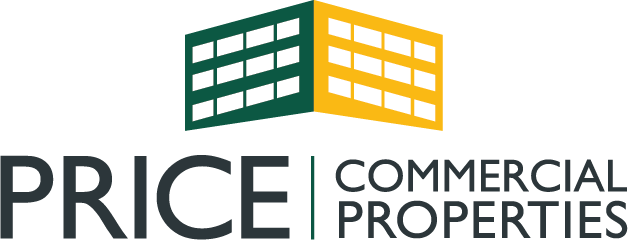The cap rate, also known as the capitalization rate, is a metric commonly used in commercial real estate to estimate a property’s potential return on investment (ROI). The cap rate for commercial real estate will depend on a variety of factors such as location, property type, economic conditions, and market trends. Because the real estate cap rate can fluctuate over time based on a variety of factors, it is difficult to predict with certainty what the cap rate will be.
While we can’t fully predict what the commercial real estate cap rate will be in 2023, Price Commercial Management has put together a quick guide outlining what the cap rate is, the average cap rate for commercial real estate, and how to calculate the capitalization rate. Keep reading to learn more.
How Are Commercial Real Estate Cap Rates Calculated?
To better understand the cap rate, let’s take a look at how it is calculated. The cap rate is determined by dividing the property’s net operating income (NOI) by its current market value or purchase price. The formula for calculating the cap rate is:
Cap Rate = Net Operating Income (NOI) / Property Value
To calculate the net operating income, you need to subtract all operating expenses from the property’s gross income. Operating expenses include property taxes, insurance, repairs and maintenance, property management fees, utilities, and other expenses associated with operating the property.
Once the net operating income is calculated, you need to take the property value and divide it by the NOI — this will determine the property’s cap rate. After calulating the cap rate, you can use this number to help compare the potential return on investment for different commercial properties or to evaluate the current market value of a property.
However, it is important to flag that cap rates are always cut and dry as they can be impacted by factors such as location, property type, and market conditions. Cap rates are also influenced by interest rates and the cost of borrowing, which can affect the perceived risk and potential return of investing in commercial real estate.
What Is Considered a Good Cap Rate for Commercial Real Estate?
Now that we’ve worked through how to calculate the commercial real estate cap rate for a property, it’s time to determine if it is a good cap rate. The ideal cap rate for commercial real estate depends on a variety of factors, including the type of property, location, age, condition of the property, and current market conditions. Generally speaking, a higher cap rate indicates a higher return on investment, while a lower cap rate indicates a lower return on investment.
However, it is important to keep in mind that a “good” cap rate can vary widely depending on the specific circumstances of the property and the investment goals of the buyer. In some markets, a cap rate of 8-10% may be considered desirable, while in other markets, a cap rate of 5-7% may be more typical.
Why the Cap Rate Is Important to Commercial Real Estate Investors
The cap rate is important to commercial real estate investors because it provides a way to compare the potential returns on different investment opportunities. By calculating the cap rate of a property, investors can quickly evaluate the income-generating potential of a property relative to its market value or purchase price.
Cap rate also provides a way for investors to evaluate the overall risk associated with an investment. A higher cap rate can indicate a higher level of risk, as there may be more uncertainty regarding the property’s income potential, while a lower cap rate may indicate a lower level of risk, as the property may be considered more stable and reliable.
Investors should carefully consider factors such as potential rental income, operating expenses, vacancy rates, and the overall condition and location of the property when evaluating a property’s specific cap rate. They also need to consider their investment goals, risk tolerance, and long-term strategies. By calculating the cap rate of a property and comparing it to similar properties in the market, investors can determine whether the property is priced appropriately and whether it represents a good investment opportunity.
Have Questions About the CRE Cap Rate in the Triad?
Investing in commercial real estate is a big decision. The cap rate is an essential metric for commercial real estate investors as it provides a way to evaluate investment opportunities, assess risk, and make informed decisions about the value and potential return of a particular property.
The future of the industry in the post-pandemic times is starting to adjust and settle, but does that mean it’s a good investment for you and your goals? Luckily, you can have a Price Commercial Properties realtor by your side to walk you through the process. With us, you’ll learn and understand the critical aspects of commercial real estate investment as we search for your ideal property to support your investment portfolio and future goals. We support investors of all sizes and experiences. We know this opportunity is an integral part of your plan to secure your financial future and we can provide you with the information you need to make the best decision.
Ready to get the inside scoop on investing? Contact us today!




